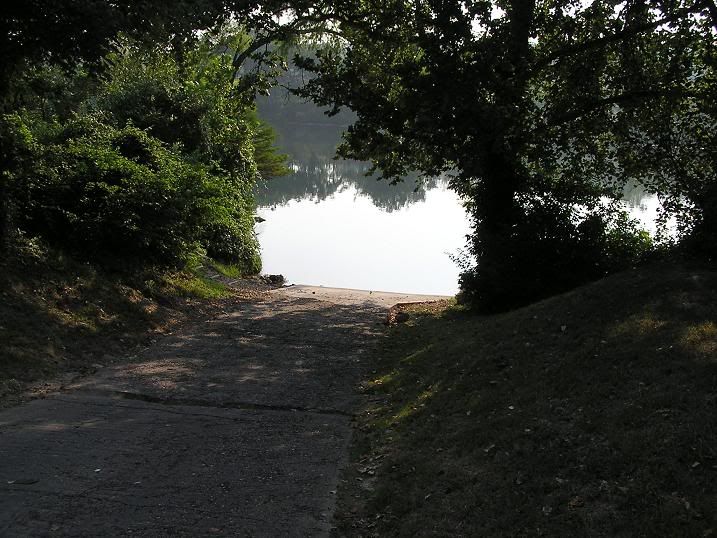Re: driving boat on trailer
I usually line up 4 or so boat length's directly behind the trailer in slow motion and test the conditions. Doesn't take but a minute to see what is going to happen to the boat when you hit the trailer.
So I adjust accordingly and drive her on; not all the way to the chock (churning up all the bottom and all), just on till she stops moving.
Sometimes, when you have a strong cross wind/waves you come (ease) right up to the side boards (like the boat is centered on the windward one and just behind it), lined straight up with the trailer and wait for the elements to blow/push you past the board. Then, just as the centerline of the boat passes the board, before the keel is centered with the trailer centerline, you give her a push (engine power) and if you get it right, by the time the boat gets to the first keel roller it's lined up for entry.
If there is a strong crosswind, I usually put less of the trailer in the water and drive (bounce) onto my 2' back mark. I had rather drive on in these conditions as if you stop the boat, without the aid of the sideboards and the rest of the trailer, the wind will blow the boat sideways at the tip of the trailer and you have to get out (into the water) and physically align it while someone else cranks.....if you have someone else with you......messy.
If you miss you can back up and try her again. I like to use the roller caps and anything else necessary so that near misses don't gouge the hull. Have alum now and it's no big deal, but when I had glass I wanted to protect it.
I have self centering keel rollers, bunks and side boards which are like tas' about 1" on each side wider than the boat, extended from the fender to the end of the trailer, about 18" high, off the frame.
Your deep v hull is probably the easiest to get centered and lined up. just a natural for a V to fit into a groove. If you don't have a groove for it adjust your bunks and rollers and make one and add side boards if necessary.
Other thing, when I back the trailer into the water, I set the trailer depth so that the boat will naturally float to within about 2' of the chock. That way I have enough trailer exposed so that the hull can pick up the trailer parts and if I come in a bit too fast, the trailer will stop it before the bow hits the chock.
One last thing. I am fortunate enough to have numerous lakes and numerous ramps at these lakes. Usually you can plan your trip for the prevailing wind direction for that day and use a ramp that has the least amount of weather related interference.
Kinda wordy, but sometimes you have to express what you mean (don't know who you are talking to) and it keeps my typing skills honed.
Mark




















